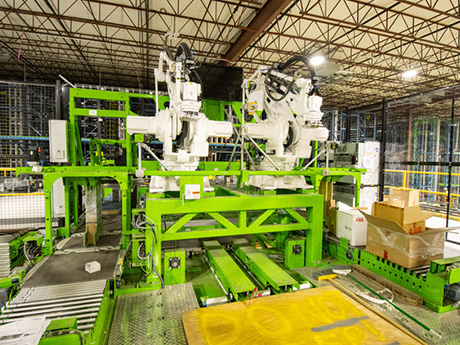By Justin Spafford, construction executive at Caddell Construction
In today’s fast-paced e-commerce landscape, consumer expectations for rapid, accurate delivery are reshaping supply chains. To stay competitive, retailers and logistics providers must embrace automation to enhance efficiency and meet growing demand. This transformation is happening amid broader shifts within the commercial real estate industry, including reshoring and increased reliance on automation tech.
Rather than investing in costly new construction, many companies are opting to retrofit existing facilities with modern automation. This approach maximizes value and allows businesses to adapt quickly to market shifts without significant downtime.

Caddell Construction has played a role in this transformation, having completed over 25 automation projects nationwide. Our current work includes nine automation projects across the United States, with another five in preconstruction and scheduled to start in the second quarter.
The numbers highlight the urgency of this shift. U.S. retail e-commerce sales for 2024 are projected to reach $1.37 trillion, representing a more than 10 percent increase from the previous year, according to CapitalOne.
Meanwhile, the warehouse automation market, currently valued at $19.2 billion, is expected to grow to $22.8 billion by 2030. The broader industrial automation sector is also expanding rapidly, with projections increasing from $206.3 billion in 2024 to $228.7 billion by 2030, as reported by Grandview Research.
As logistics and manufacturing operations are increasingly onshored, automation is becoming an essential tool to maintain speed and efficiency. Material handling automation has been shown to increase e-commerce output by 300 percent, and 25 percent of online buyers are willing to pay a premium for same-day delivery.
With 62 percent of U.S. businesses and 75 percent of European firms planning to invest in robotic automation by 2025, the industry’s reliance on these advanced solutions will only grow.
Integrating automation into active facilities requires coordination among clients, end-users and technology providers. Unlike ground-up construction, retrofits must be carefully planned to avoid operational downtime while still improving efficiency. It is critical for conversations to be held as early as possible in the procurement and preconstruction phases regarding the amount of downtime required.
For example, Caddell’s client-based teams are trained to understand their client’s business model before setting foot onsite. They are taught to recognize the impact that even five minutes of downtime has on the business so they understand the importance of minimizing this pain point for the customer.
It is imperative, therefore, that organizations considering the cost-benefit analysis of retrofitting for automation engage in real talk with their contractors of choice to ensure they fully understand the plan, process and potential impact. Likewise, it is imperative that contractors work efficiently and purposefully to complete the project as quickly as possible.
The push for automation is not merely a trend but a necessity with increasing e-commerce volumes and a federally driven mandate to create more goods in the United States. By collaborating with clients and tech providers, general contractors can ensure that each project is executed seamlessly, helping companies future-proof their operations and maximize the potential of their existing facilities.
— This article originally appeared in the March 2025 issue of Southeast Real Estate Business magazine.


